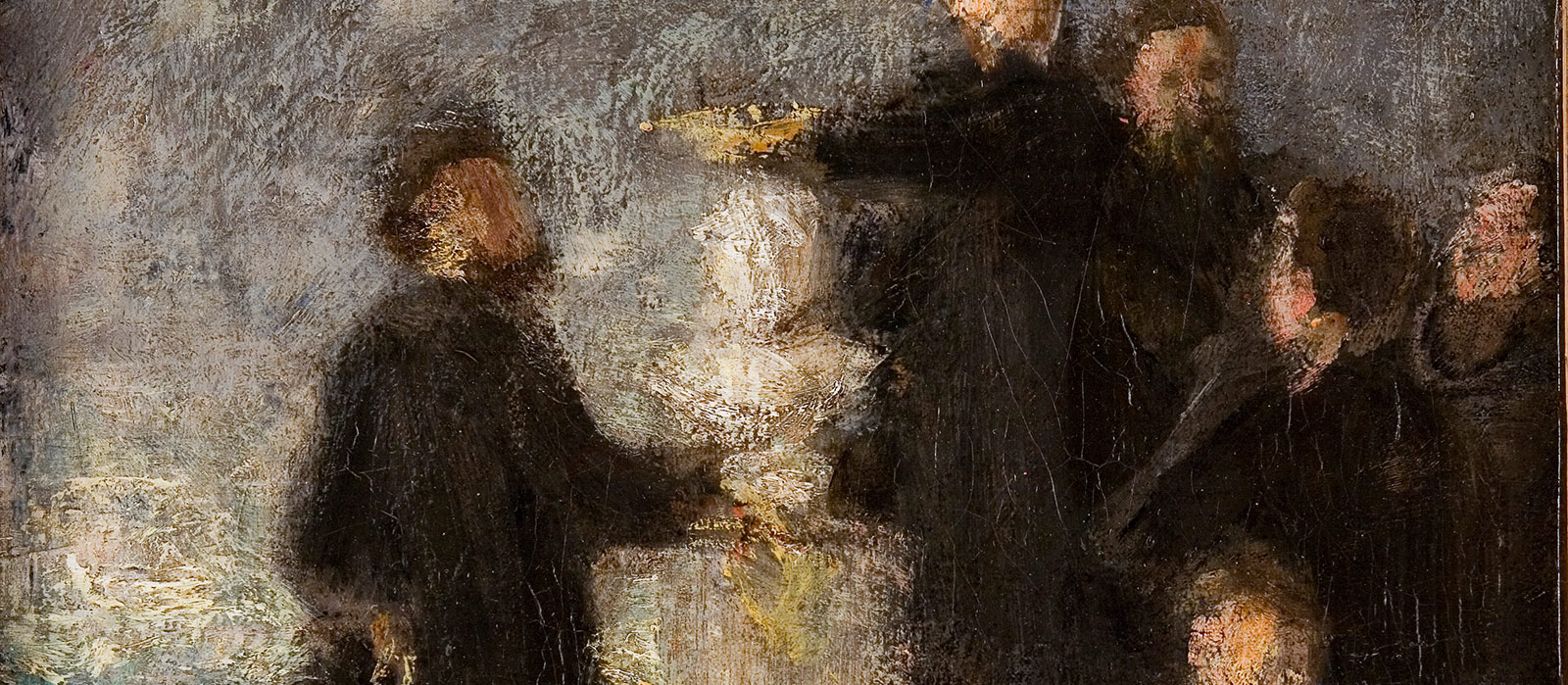Museum & Studio
Delacroix’s Influence
A great painter who died without students
In answer to Constant Dutilleux (1807–1865) who congratulated him on being received into the Academy of Fine Arts at last, on his seventh attempt, in January 1857, Delacroix wrote, with great regret, that it came too late for him to have a studio and welcome young artists to work with him. Although the great painter had enjoyed the solitary pursuit of his work, it would seem he lamented not having the opportunity or the time to take students under his wing. Delacroix passed away on August 13, 1863, leaving no students to continue his work.
A master for the next generations
Very quickly, however, he was considered a master by many of the younger generation. Held in Paris in February 1864, the posthumous sale of all the works that remained in his studio on Rue de Furstemberg was a revelation for the generation that Edmond Duranty referred to as "The New Painting;" young artists discovered Delacroix’s skill as draftsman, something that had remained a secret until then. Edgar Degas, Claude Monet, and Paul Cézanne all identified with the great painter’s work and stance.
Homage(s) to Delacroix

The monumental painting by Henri Fantin-Latour, Homage to Delacroix (1864, Musée d’Orsay) shows artists and critics grouped around the painter, implicitly acknowledging him as a leading light of French painting. Édouard Manet, the American artist James Abbott Whistler, Charles Baudelaire, and the critics Duranty and Champfleury are standing or sitting on either side of the painter’s portrait. In the spring of 1885, a major exhibition was held at the École des Beaux-Arts to raise funds for the subscription to erect a monument to the late painter in Paris. Art critic Paul Mantz paid tribute to the artist’s memory in the preface to the catalogue:
“Thus lived, in the midst of battles we must now erase from our memories, the great painter, the great poet to whom we shall erect a deserved and belated monument. True artists are always of their time: they are pervaded by a contemporary spirit, it inspires them and celebrates when it recognizes itself in their ideal. Delacroix gave us this exhilarating pleasure. May he be thanked for it.”
The design and execution of the monument was entrusted to sculptor Jules-Aimé Dalou (1838–1902), who had the deepest admiration for Delacroix. It was installed in the Luxembourg Garden and inaugurated on October 5, 1890.
His Journal: a personal insight into the artist’s life and work
In the spring of 1893, the first edition of Eugène Delacroix’s previously unpublished Journal was released. Edited by Paul Flat and René Piot—who had been a student of Pierre Andrieu, Delacroix’s assistant for Saint-Sulpice—, it gave readers new insight into Delacroix’s life and work. The artist celebrated during his lifetime for his sense of color and movement, and recognized as an accomplished draftsman following the 1864 sale of his works, was now revealed to be a talented writer, winning over readers with his style and words. Painter, draftsman, writer, Delacroix was a man of many talents, whose memory influenced countless artists over the decades. Born in the 1860s or early 1870s, Maurice Denis, Paul Signac, Émile Bernard, and Édouard Vuillard were scarcely over twenty years old when Delacroix’s writings were published. They went on to become the founders of the Musée Delacroix, saving his final studio from destruction and converting it into a museum.
The father of modern art
Eugène Delacroix was and remained a master for the artists of the 20th century. Henri Matisse and Pablo Picasso, like Charles Camoin, Marc Chagall, and Jean Bazaine, all admired the works of the Romantic painter. His obedience to his own genius, his talent for seizing the moment, his brilliance with color, and his strong sense of storytelling all designated him as one of the greatest creators of French art. A connoisseur of the human soul, his work was remarkably modern, drawing on the keen observation of emotions and their masterly transcription.


